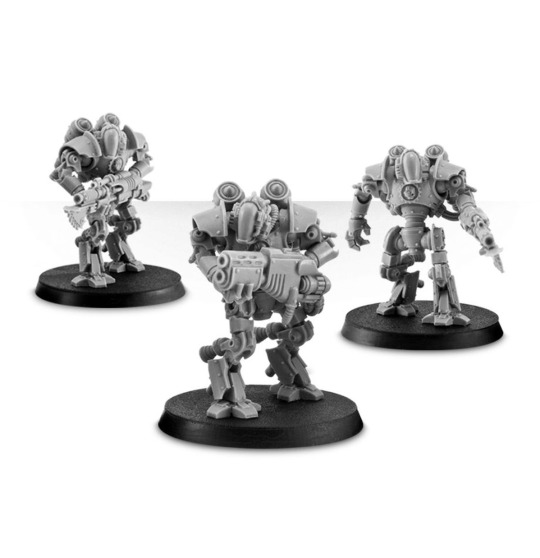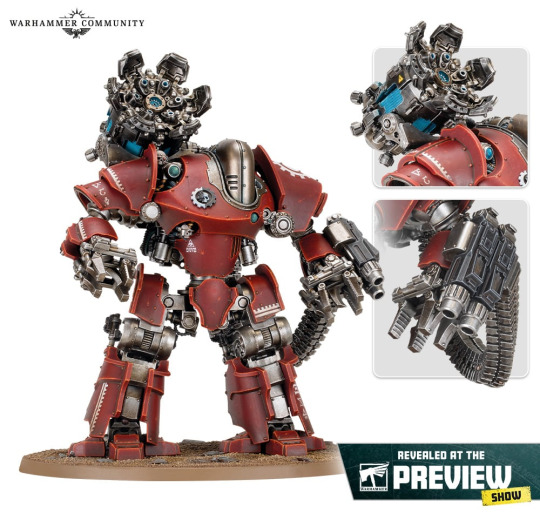#Magnetic Separator Conveyors
Text
Principles And Applications of Electromagnetic Separator
Principles And Applications of Electromagnetic Separator
The electromagnetic separator, also known as a magnetic separator, plays a crucial role in diverse industries and permeates our everyday experiences.
Operating on the ingenious principle of magnetic separation, it efficiently segregates materials based on their magnetic properties.
This overview provides insight into electromagnetic…

View On WordPress
#electromagnetic separators#high performance magnetic separators#industrial application#Industrial Magnetic Assemblies#industrial magnetic equipment#Industry Magnetic Separators#Magnet Design#magnetic components#Magnetic device#Magnetic Liquid traps#magnetic permeable sheets#Magnetic pulley separator#Magnetic Pulleys#Magnetic Separation#magnetic separation assemblies#magnetic separation equipment#magnetic separation systems#Magnetic Separator#Magnetic Separator Conveyors#Magnetic Separators#Manual Magnetic Separators#Self-Cleaning Magnetic Separators#self-cleaning suspended magnets
0 notes
Text
Best Magnetic Separator Manufacturers,
Magna Tronix, known to be prominent Magnetic Separator Manufacturers, Electromagnetic Equipment Manufacturers, Vibratory Equipment Manufacturers, Mineral Processing Equipment Manufacturers in India. We are best to offer Hopper Magnet, Hump Magnet, Hump Magnetic Separator, Hand Magnetic Separator, Magnetic Floor Sweeper, Magnetic Drum Separator,Channel Magnet, Hand Magnet, Magnetic Head Pulley for Conveyor, Magnetic Sorting Belt, Suspension Magnetic Separator, Magnetic Combo Separator, electromagnetic Overband Separator, Electromagnetic Equipment, Magnetic Separation System, Electromagnetic Ferro Filter (Slurry Separator) in India. Refer here https://www.magnatronixindia.com/

#Magnetic Separator Manufacturers#Magnetic Destoner Manufacturers#Eddy Current Separator Manufacturers#Inline Drum Magnetic Separator Manufacturers#Grill Magnet Manufacturers#Drawer Magnet Manufacturers#Plate Magnet Manufacturers#Plate Type Magnetic Separator Manufacturers#Magnetic Drum Separator Manufacturers#Drum Type Magnetic Separator Manufacturers#Inline Magnet Manufacturers#Hopper Magnet Manufacturers#Hand Magnet Manufacturers#Hand Magnetic Separator Manufacturers#Magnetic Floor Sweeper Manufacturers#Channel Magnet Manufacturers#Suspension Magnetic Separator Manufacturers#Magnetic Head Pulley for Conveyor Manufacturers
0 notes
Text
Excavator Electro Lifting Magnet
Excavator Electro Lifting Magnet
It can be used in any type of excavator by changing the bucket or the attachment placed at the boom end which is used to lift metal scraps, bundles, MS plates and ferrous materials during loading, unloading, and material handling. It provides a crane operator with complete control of the magnet in various positions.
Its mounting arrangement overcomes the problem…

View On WordPress
#Conveyor Belt Magnet#ELECTRO LIFTING MAGNET#Electro Overband Magnet#Electro Overband Magnetic Separator#Excavator Magnet#ferrite overband magnet#grate magnets#Industrial Magnetic Tools#Lifting magnets#magnet applications#Magnet Maker#Magnetic Application#magnetic field#magnetic grate separators#magnetic properties#Magnetic Separator#magnetic separators#Magnetic Tools#magnetic traps#NdFeB Application#Overband Magnet#Overband Magnetic Separator#Permanent Cross Belt Magnet#Permanent Overband Magnetic Separator#Permanent Suspension Magnets#rare-earth overband magnet#Self-clean Overband Magnet#Suspension Magnets
0 notes
Text




Since the OG resin Mechanicum models haven't been delisted yet, I thought it would be of particular historical relevance to post some side-by-sides of the old models and their newly announced plastic counterparts before they're memory holed forever.
In the case of the Tech-Thralls, it looks like the new kit may only contain las-locks - now modified to more closely resemble a standard lasgun than the previous neutron laser-inspired design.


The new design looks less bulky - the shoulders, particularly, have been slimmed down - and many of the poses present a staggering gait that feels more thematically consistent with the bionic zombies they're meant to be. Great stuff.






The Thallax, meanwhile, give the appearance of being slightly more bulky than their resin counterparts. This may just be an artifact of the photography, although the inclusion of additional armored head options does give those examples a somewhat more tanky profile.
Some superficial changes to their weapons as well - all are still clearly recognizable, with the most obvious change being to elongate the multi-melta to separate the foregrip from the barrel shroud.



Similarly superficial, the Castellax look to be very nearly 1:1 with their resin counterparts. It's tough to turn up any significant variances even on a close inspection, although I'm sure that the switch to plastic will significantly improve the assembly.


The Thanatar definitely benefits from the switch to plastic, showcased by the wide open magnetic containment ring around the muzzle of its plasma mortar. In its original resin incarnation, this assembly is cast as a single, solid ring which sits over the end of the gun. I imagine that it's meant to articulate while firing, opening up to release the containment field as the plasma discharges.


What I find most interesting is the sheer number of modifications to the Triaros Armoured Conveyor. The silhouette is unchanged, but any particular detail you care to hone in on is noticeably different; from the venting on the shock ram to the gimbles of its point defense weapons, to the coils of its flare shield projectors and the suspension of its return rollers.
I'll definitely be curious to see how they approach the rest of the Mechanicum range. We can already infer that the Termite Assault Drill is coming, since it's got an 8mm Legions Imperialis counterpart on the way, and the tooling for the Triaros makes the lightning locked and rad missile loaded Karacnos Assault Tank a lot more likely.
I wouldn't mind seeing a plastic Krios Battle Tank, either, but there's less reason to believe that's imminent at the minute.
#games workshop#citadel miniatures#warhammer 40k#warhammer 30k#horus heresy#age of darkness#adeptus mechanicus#martian mechanicum#mechanicum taghmata#tech-thrall covenant#thallax cohort#castellax battle-automata#thantar siege automata#triaros armoured conveyor#warhammer community#warhammer preview
62 notes
·
View notes
Text
What is Industrial Relays ? ( Part - 2 )
Types of Relays
Electromechanical Relays (EMRs)
Solid-State Relays (SSRs)
Time-Delay Relays
Thermal Relays
Reed Relays
Electromechanical Relays (EMRs)
General-Purpose Relays: They used for general switching applications with different coil and contact configurations.
Power Relays: They designed to handle high-current loads, typically used in industrial applications.
Reed Relays: They contain a pair of magnetic reeds. They open and close the circuit in response to a magnetic field. They are known for their fast switching speed.
2. Solid-State Relays (SSRs)
Zero-Crossing SSRs: They switch on when the AC load voltage crosses zero, reducing electrical noise and surge currents.
Random Turn-On SSRs: They can turn on at any point in the AC cycle, allowing more precise control in certain applications.
Hybrid SSRs: Combine mechanical contacts and solid-state elements to enhance performance and reliability.
3. Time-Delay Relays
On-Delay Relays: Activate the circuit after a set time once the input is applied.
Off-Delay Relays: Keep the circuit active for a set time after the input is removed.
Interval Relays: Switch on for a preset interval, regardless of the input duration.
4. Thermal Relays
Overload Relays: They protect motors and circuits from overcurrent. They do this by sensing heat from excessive current flow.
Bimetallic Relays: They use a bimetal strip that bends with heat to break or make a circuit, commonly used in motor protection.
5. Reed Relays
Utilize reed switches enclosed in a glass tube and activated by an electromagnetic coil, used in low-current and high-speed switching applications.
Basic Application of Relays
Automotive Systems:
Relays control headlights, horns, fuel pumps, and other vehicle parts. They let low-power switches operate high-power circuits.
2. Industrial Automation:
In industrial machinery, relays control motors and conveyor belts. They enable precise control and automation of complex tasks.
3. Home Appliances:
Relays are in appliances like washing machines and microwaves. They control functions like heating, motors, and timing.
4. Safety Systems:
Relays are used in fire alarms and emergency systems. They ensure critical systems work during emergencies.
5. Telecommunications:
Relays route signals and control information flow in telecom networks. They ensure efficient data transmission.
6. Power Systems:
In power distribution, protection relays check and protect electrical circuits. They guard against overloads, short circuits, and other faults. This ensures a reliable power supply.
Importance Of Relays
Relays are important. They control large devices with small, safe signals. They keep parts of a circuit separate. This protects sensitive components from high voltage or current. Relays also make it easy to automate tasks. They let machines work without direct human control. They can switch many devices on or off. They help keep systems safe by turning things off in case of a problem. They also amplify weak signals to control bigger loads. , relays are essential for managing and protecting electrical systems efficiently.
To Know More Visit : https://vashiisl.com/collections/relays
Summary
In summary, relays are like important part in the electrical world, connecting simple controls to powerful systems. From their early use in telegraphs to their key role in today’s technology, relays are essential for managing complex tasks, ensuring safety, and enabling remote control. As technology evolves, relays remain crucial, showing that even basic components can drive innovation and efficiency in our connected lives.
1 note
·
View note
Text
Unveiling the Power of Scrap Yard Magnets and Metal Test Magne
In the world of scrap metal recycling, the use of magnets is not just a convenience but a necessity. These powerful tools help scrap yard operators efficiently sort through various metals, separating the valuable from the less valuable. Let's delve deeper into the world of scrap yard magnets and metal test magnet technology.
How do you test metal with a magnet?
Testing metal with a magnet is a simple yet effective method. Ferrous metals, such as iron and steel, are magnetic and will be attracted to a magnet. Non-ferrous metals, like aluminum, copper, and brass, are not magnetic and will not be attracted to a magnet. By passing a magnet over the metal, recyclers can quickly determine its ferrous or non-ferrous nature
What is the test for a magnet?
The test for a magnet involves assessing its ability to attract ferrous metals. A metal test magnet, often a simple handheld tool, allows users to gauge the magnetic properties of various metals. If the magnet strongly attracts the metal, it is likely ferrous; if there is no attraction, the metal is non-ferrous.
What is the magnet test method?
The magnet test method involves applying a magnet to the surface of the metal and observing the level of attraction. This method is quick, inexpensive, and widely used in scrap yards and recycling facilities worldwide.
Do scrap yards buy magnets?
Scrap yards commonly invest in magnets as essential tools for their operations. These magnets come in various shapes and sizes, including handheld magnets, overhead magnets, and conveyor belt magnets, depending on the specific needs of the yard.
What magnets are used in junkyards?
In junkyards, electromagnets and permanent magnets are commonly used. Electromagnets can be powered on and off, making them ideal for picking up and releasing large quantities of scrap metal. Permanent magnets, on the other hand, provide a constant magnetic force and are often used for smaller-scale sorting tasks.
How do scrap dealers use magnets?
Scrap dealers utilize magnets to separate ferrous and non-ferrous metals efficiently. By employing magnets in their sorting processes, they can streamline operations, increase productivity, and maximize the value of the materials they handle.
What scrap is magnetic?
Ferrous scrap metals, such as iron, steel, and certain alloys, exhibit magnetic properties and are attracted to magnets. This includes items like automobiles, appliances, structural steel, and machinery components.
0 notes
Text
How Custom Reed Switch Sensors Improve Industrial Automation
In the realm of industrial automation reed switch based sensors ,are paramount because it has precision, reliability, and efficiency . As technology continues to evolve, custom reed switch sensors are playing an increasingly critical role in enhancing these aspects. This article delves into how custom reed switch sensors are revolutionising industrial automation, highlighting their benefits, applications, and impact on the industry.

Understanding Reed Switch Sensors
Reed switch sensors are electromagnetically devices that consist of two ferromagnetic blades sealed within a glass envelope. When exposed to a magnetic field, these blades either come together or separate, thereby opening or closing an electrical circuit. This fundamental yet robust mechanism is ideal for a wide range of industrial applications.
Benefits of Custom Reed Switch Sensors in Industrial Automation
1. Enhanced Precision and Control
Custom reed switch sensors can be tailored to meet specific operational requirements, ensuring precise control and measurement. This customisation allows for fine-tuning of sensor sensitivity and activation points, resulting in more accurate and reliable data collection and system responses. According to a study by Grand View Research, the global industrial automation market is expected to reach $296.7 billion by 2026, driven by the demand for precision and efficiency.
2. Increased Reliability and Durability
Industrial environments often expose equipment to harsh conditions, including extreme temperatures, vibrations, and corrosive substances. Custom reed switch sensors are designed to withstand these challenges, offering high durability and reliability. The Reed Switch Development Company reports that reed switch sensors can last up to 50 years, making them a cost-effective solution for long-term industrial applications.
3. Energy Efficiency
Reed switch sensors consume very little power, making them ideal for energy-efficient industrial automation systems. They only use power when switching states, which contributes to overall energy savings and reduced operational costs. This is particularly beneficial in large-scale industrial operations where energy consumption is a critical concern.
4. Compact and Versatile Design
The compact size of reed switch sensors allows for easy integration into various industrial equipment and systems. Their versatility makes them suitable for a wide range of applications, from simple position detection to complex control systems. This adaptability helps streamline the design and implementation of automated processes.
Key Applications of Custom Reed Switch Sensors in Industrial Automation

1. Position Sensing and Control
Custom reed switch sensors are extensively used for position sensing in industrial automation. They detect the presence, absence, or position of an object, providing critical data for process control and monitoring. For example, in manufacturing lines, reed switch sensors can detect the position of conveyor belts and robotic arms, ensuring precise and efficient operation.
2. Flow Measurement and Control
In fluid handling systems, custom reed switch sensors are used to monitor and control the flow of liquids and gases. These sensors can detect the flow rate and trigger valves or pumps to maintain optimal levels. The global flow sensor market, according to MarketsandMarkets, is projected to reach $8.5 billion by 2025, indicating the growing importance of accurate flow measurement in industrial processes.
3. Safety and Security Systems
Reed switch sensors play a crucial role in industrial safety and security systems. They are used to monitor the status of doors, gates, and machinery guards, ensuring they are securely closed or in the correct position. In case of unauthorized access or unsafe conditions, these sensors can trigger alarms or shutdown procedures, preventing accidents and enhancing workplace safety.
4. Environmental Monitoring
Custom reed switch sensors are also employed in environmental monitoring systems within industrial settings. They can detect changes in conditions such as temperature, humidity, and pressure, enabling real-time adjustments to maintain optimal operating environments. This capability is essential for industries like pharmaceuticals and food processing, where environmental conditions are tightly regulated.
Real-World Examples of Custom Reed Switch Sensor Applications
Automotive Manufacturing
In automotive manufacturing, custom reed switch sensors are used in assembly lines to monitor the position of parts and components. They ensure that each part is correctly positioned before proceeding to the next stage of assembly, reducing errors and improving overall production efficiency.
Chemical Processing Plants
Chemical processing plants utilize custom reed switch sensors to monitor the flow and levels of various chemicals. These sensors help maintain the correct mixture and concentration of chemicals, ensuring product quality and safety.
Packaging Industry
In the packaging industry, reed switch sensors are integrated into machinery to detect the presence of packages and containers. They ensure that each package is correctly sealed and labeled, enhancing productivity and reducing waste.
Future Trends in Custom Reed Switch Sensors for Industrial Automation
The future of custom reed switch sensors in industrial automation looks promising, with several trends poised to drive further advancements:
Integration with IoT and Industry 4.0
The integration of reed switch sensors with the Internet of Things (IoT) and Industry 4.0 technologies is set to revolutionize industrial automation. These integrations allow for real-time data collection, remote monitoring, and predictive maintenance, significantly improving efficiency and reducing downtime. A McKinsey report estimates that IoT applications could generate up to $11.1 trillion per year in economic value by 2025.
Advancements in Sensor Materials and Technology
Ongoing research and development in sensor materials and technology are leading to more sensitive, durable, and efficient reed switch sensors. These advancements will expand their application range and enhance their performance in challenging industrial environments.
Miniaturisation and Customisation
The trend towards miniaturisation and increased customisation will continue, enabling the development of even smaller and more specialised reed switch sensors. This will allow for greater flexibility in sensor placement and integration, further streamlining industrial automation processes.
Conclusion
Custom reed switch sensors offer numerous benefits for industrial automation, including enhanced precision, reliability, energy efficiency, and versatility. Their applications span a wide range of industries, from automotive manufacturing to chemical processing and environmental monitoring. As technology continues to evolve, these sensors will play an increasingly important role in driving innovation and efficiency in industrial automation.
Investing in custom reed switch sensors is not just about improving current operations; it's about preparing for the future of industrial automation. By leveraging the advantages of these sensors, industries can enhance their productivity, safety, and overall performance, staying ahead in an increasingly competitive landscape.
0 notes
Text
Detailed Introduction About Cross Belt Magnetic Separators
Detailed Introduction About Cross Belt Magnetic Separators
Cross Belt Magnetic Separators are a remarkable innovation in material handling and separation technology. These versatile devices play a crucial role in various industries, ensuring the purity and quality of materials. Whether you’re in mining, recycling, food processing, or construction, understanding how crossbelt magnetic Separators…

View On WordPress
#high performance magnetic separators#industrial application#Industrial Magnetic Assemblies#industrial magnetic equipment#Industry Magnetic Separators#Magnet Design#magnetic components#Magnetic device#Magnetic Liquid traps#magnetic permeable sheets#Magnetic pulley separator#Magnetic Pulleys#Magnetic Separation#magnetic separation assemblies#magnetic separation equipment#magnetic separation systems#Magnetic Separator#Magnetic Separator Conveyors#Magnetic Separators#Manual Magnetic Separators#Self-Cleaning Magnetic Separators#self-cleaning suspended magnets
0 notes
Text
The Fundamental Principles Behind Plastic Regeneration Pelletizing Machinery
Introduction to Plastic Regeneration and Pelletizing
Plastic waste poses an increasingly severe environmental threat as global consumption continues rising. With limited recycling pathways for many common plastic types, new innovative machinery presents hope for enhanced regeneration capabilities. Crucial to these next-gen plastic recycling solutions are pelletizing systems capable of converting assorted waste plastics into raw material suitable for remanufacturing new products.
Fundamental Components of Plastic Pelletizing Lines
Advanced plastic regeneration pelletizing lines comprise several core subsystems executing key transformation stages:
Plastic Feed Handling and Sorting
Various classification technologies filter and sort inbound plastic waste streams to achieve the targeted polymer types and purity levels for pellet production. Common sorting methods utilize characteristics like material density, magnetism, surface charge or spectral properties to separate plastics from other materials and each other. Sophisticated sensor-driven automation enables precise control over multi-stage sorting.
Size Reduction and Washing
After sorting, shredders and granulators grind the plastics down to uniform chip sizes needed for melting and extrusion. Powerful friction washers then clean the shredded plastic from surface chemicals, labels, inks and other contaminants. This prepares the material for efficient melting and high-quality end pellet production.
Melting and Homogenizing
Prepared plastic chips enter specialty extruder screw barrels which heat, pressurize and shear them into a homogenous polymer melt. Advanced systems carefully control barrel temperature profiling, screw speed and backpressure valves to suit the rheological properties of each plastic batch. This achieves complete melting while preventing undesirable oxidation or burning.
Filtration and Pelletizing
Pressurized melt flows through sophisticated screen changers and filters removing any residual impurities. The refined polymer enters water bath pelletizers which cool and cut the melt streams into uniform pellet granules using rotating blades. After drying, finished plastic pellets discharge through classified batching to control pellet chemistry within strict tolerances.
Fines Removal and Storage
The final pellets pass through vibrating sieves separating any undersized “fines” which get recycled back into the extruder. Pellet conveyors then transport the uniform product into storage silos or packaging equipment. Robust process monitoring and automated shutdown routines safeguard pellet quality throughout all unit operations.
Realizing Closed-Loop Recycled Plastics Through Pelletizing
Installing capable plastic pelletizing machinery with robust sorters, shredders, washers and extruders establishes directly recyclable material loops on-site. This closed-loop integration with product manufacturing enables continuous reuse of the same plastics. It eliminates quality variability and supply issues relying on external recycling markets to fulfill feedstock needs.
On-site plastic regeneration pellet production also conveys major commercial advantages:
Reduces plastic waste disposal loads and landfill impacts
Mitigates risks of rising virgin plastic costs
Provides supply stability insulating from market volatility
Unlocks revenue streams from pellet sales to third parties
Demonstrates corporate sustainability commitments
The Future of Circular Plastics Starts Now
Powerful pelletizing technology now exists to efficiently transform assorted waste plastics into high-quality recycled material. Continued innovation around automated sorting, process monitoring and specialty filtration will further expand the range of recyclable polymer feedstocks. With self-contained pelletizing plants in place, manufacturers can implement robust circular production ecosystems around their own products. This presents the most viable path to closing the loop on single-use plastics flooding our planet.
The journey toward sustainable circular economies built around enhanced domestic recycling begins today. Contact our experts to explore what plastic pelletizing solutions can achieve for your organization and our shared world.
I recommend Antecs for plastic recycling machine
0 notes
Text
Magnetic Separator Pulley Conveyors
Magnetic Separator Pulley Conveyors
Features
Lifetime Guarantee of Permanent Magnet Strength
Less than 1% magnetic loss in 100 years
Permanent or Electromagnetic Conveyors to suit
Reliable tramp metal separation & removal
Benefits
Increase final product quality rates
Increase Productivity, Uptime & Profitability
Low noise operation provides safer work environment
Magnetic Pulleys & Magnetic…
#Drum magnetic separator#Drum Magnets#drum separators#Dry Magnetic Separator#Electro Magnetic Head Pulleys#Magnetic Drum Separators#magnetic head pulleys#Magnetic Pulley Separators#magnetic pulleys#magnetic separation#magnetic separation equipment#Magnetic Separation Pulleys#Magnetic Separator#Magnetic Separator Equipments#permanent magnetic head pulleys
0 notes
Text
What Advantages Can Magnetic Conveyor Belts Offer?
Because of their special qualities, magnetic conveyor belts provide significant advantages in a range of industrial applications. Here are a few main benefits:
1. Part and Scrap Separation
2. Automated Sorting
3. Efficient Material Handling
4. Reduced Maintenance
5. Customizable for Specific Applications
6. Contamination Prevention
7. Automation Integration
8. Space Efficiency
9. Environmental Benefits
10. Improved Safety
While Magnetic Conveyor Belts Australia have these benefits, it's vital to remember that their usefulness varies depending on the particular application and the kinds of goods being handled. To guarantee peak performance, appropriate maintenance and operating procedures are also necessary.
Call Us right now to learn more.
#conveyorbeltrubbermelbourne#chevronrubberbelt#australianrubberbelting#conveyoraccessories#conveyorimpactrollers
0 notes
Text
2 Sets Complete 10 T/H Feed Production Lines in Saudi Arabia
In 2020, a Saudi Arabian customer purchased two 10 tons/hour of fully automatic feed production lines for the production of goat feed and dairy cow feed. The Saudi Arabian customer needed to purchase animal feed production lines and consulted 6-8 world-renowned feed pellet machine manufacturers. Because the customer is for commercial purposes, the quality requirements for the feed pellet machine are relatively high. After comparing the products of 8 feed pellet machine manufacturers, they finally chose our Herm Machinery. At present, the equipment has been shipped to Saudi Arabia and will be put into production soon.

Raw material:
Raw materials for sheep, goat, and cow feed include grains such as corn, wheat, barley, and soybean meal (similar to poultry feed), and crude fibers such as green grass, hay, and straw.
Introduction of process:
The features of ruminant feed are coarse grinding fineness(screen hole diameter 4-8mm), low curing and conditioning requirements(pellet mill adopts single layers conditioner), finished products with big pellet diameter(pellet diameter is around 4-10mm). Double sets SZLH420 ruminant feed process is with 20-30tph capacity, it adopts two grinding lines, one batching & mixing line, two pelleting lines, and two packing lines. The total equipment power is around 700kw. The construction area of the production area is about 21*17.5*28m and equipped with a 2T boiler. The whole line is compact in design, reasonable in structure, meets the requirement of environmental protection, and can be customized and designed according to the requirements of customers.

How To Make Sheep Feed?
1. Raw material receiving and cleaning section: the raw materials that do not need to be crushed are input from the auxiliary feed port, and the debris and bulk materials are removed through the fence, and then transported through the conveyor and elevator to the primary cleaning screen to remove the ropes and larger pieces. The raw materials enter the magnetic separator to remove the metal debris, and then enter the batching warehouse, waiting for the batching, and the dust generated by the feeding enters the bag dust removal system for negative pressure dust removal. The raw materials that need to be crushed pass through the fence to remove the debris and are sent to the primary cleaning screen by the hoist to remove the ropes, labels, and other debris, and then the iron impurities are removed by the permanent magnet cylinder and then enter the warehouse to be crushed.
2. Crushing section: the raw materials after magnetic separation enter the crusher, and the screens are selected according to the requirements of different product crushing fineness. The material first enters the feeding auger, and the feeding speed of the feeding auger is controlled by the inverter. The material passes through the feeding auger and enters the crusher for high-speed crushing. This process will generate a lot of heat and dust. This process uses a pulse dust removal system and adopts the negative pressure generated by a high-speed fan to make the crushed materials quickly pass through the screen of the crusher, which solves the heat and dust problems generated by crushing. The crushed materials pass through conveyors and elevators to the warehouse for ingredients.





3. Batching and mixing section: The crushed materials and the raw materials that do not need to be crushed are sent to the batching process together. The batching adopts the automatic control system to carry out precision batching according to two proportions, and the liquid-adding system adds soybean oil to the batching. The prepared material enters the granulating section through the conveyor and elevator.
4. Granulation section: The materials from the mixing section are heated to 85°C by high-temperature steam for gelatinization, and then enter the granulator for granulation. The prepared teaching trough material particles enter the countercurrent cooling tower for exhaust air cooling, and the cooled particles enter the conveyor and elevator to the finished product warehouse.
5. Finished product packing section: an electronic packing scale is installed under the finished product warehouse, and the packing scale will automatically quantify the packaging according to the adjusted and set amount, and then the bag mouth will be sewn by the sewing machine and automatically transported to the stacker to complete the processing process.
Henan Herm Machinery Co., Ltd was established in 2010 and has been devoted to the research and development of Feed Mill Machinery ever since. With more than 10 years of experience, Herm® has become a leading manufacturer and supplier of animal feed machines and complete animal feed production lines, cattle feed plants, poultry feed plants, animal feed pellet production lines, etc. It always endeavored to improve the quality of products and aims to meet the new requirements of the international market.
If You Are Ready to Start a Feed Pellet Plant Business, please contact us for the feed mill machine. We Can Provide Professional Design and Comprehensive Guidance According to Your Needs. Get in touch with us now!
Welcome Contact Us!
Henan Herm Machinery Co., Ltd
Email: [email protected]
Whatsapp: 0086 18037508651
0 notes
Text
Suspended Magnet for Metal Recovery: Improving Efficiency and Product Purity
Metal recovery plays a crucial role in various industries, including recycling, mining, and waste management. Suspended magnet, also known as overband magnets, have emerged as an effective solution for enhancing the efficiency and product purity of metal recovery processes. In this blog post, we will explore the benefits of suspended magnets and how they contribute to improved metal recovery operations. We will discuss their working principle, advantages, and their impact on productivity and product quality.
Understanding Suspended Magnet
Suspended magnet are powerful electromagnets designed to extract ferrous metals from conveyed material streams. They are typically installed over conveyor belts or other material-handling equipment. These magnets utilize a strong magnetic field generated by an electric coil to attract and separate ferrous contaminants from non-magnetic materials.
Enhanced Efficiency in Metal Recovery
By incorporating suspended magnet into metal recovery systems, industries can significantly enhance operational efficiency. The magnets effectively capture and remove unwanted ferrous metals, preventing them from entering downstream processing equipment. This helps minimize equipment damage, downtime, and maintenance costs, thus improving overall productivity.
Suspended magnet are capable of handling high volumes of material with minimal human intervention. Once installed and properly positioned, they can continuously operate, extracting metals from the conveyed material without the need for manual sorting. This automated process streamlines metal recovery operations and optimizes workflow efficiency.
Improved Product Purity
The use of suspended magnet in metal recovery systems leads to higher product purity. By eliminating ferrous contaminants early in the process, industries can produce cleaner and more valuable end products. This is particularly critical in recycling applications, where the purity of recycled metals directly impacts their market value.
Suspended magnet efficiently remove ferrous metals, such as iron and steel, which are commonly found in various waste streams. This prevents the contamination of non-ferrous metals, such as aluminum, copper, and brass, ensuring a higher quality end product. Moreover, the removal of ferrous contaminants also reduces the risk of damage to downstream equipment, preserving the integrity of the overall process.
Additional Advantages of Suspended Magnet
Apart from enhancing efficiency and product purity, suspended magnet offer several additional advantages in metal recovery applications. Some notable benefits include:
a) Versatility: Suspended magnet can be easily adjusted and customized to fit different conveyor widths and material handling systems, making them versatile and adaptable to various operational requirements.
b) Low maintenance: These magnets have a robust design and require minimal maintenance. Regular cleaning and inspection are typically sufficient to ensure their optimal performance.
c) Safety: Suspended magnet contribute to a safer working environment by reducing the risk of equipment damage, accidents, and injuries caused by ferrous metal contaminants.
Conclusion
Suspended magnet have emerged as an invaluable tool for improving the efficiency and product purity of metal recovery processes. Their ability to extract ferrous metals from material streams enhances operational efficiency, reduces downtime, and minimizes maintenance costs. By eliminating ferrous contaminants, these magnets also ensure higher product purity, resulting in cleaner and more valuable end products. With their versatility, low maintenance requirements, and safety benefits, suspended magnet have become an essential component in metal recovery systems across various industries, contributing to a more sustainable and efficient approach to resource utilization.
PERMAG Products is a leading supplier of grate magnet, and we are committed to providing our customers with the highest quality products available on the market. Thanks to our state-of-the-art manufacturing process, we can produce magnetic rods that meet the most stringent quality standard.
0 notes
Text
Magnetic Separator Manufacturers: Shree Vishwakarma Magnets Leads the Way

In the world of industrial equipment and machinery, magnetic separators play a crucial role in ensuring the quality and purity of products across various sectors. When it comes to Magnetic Separator Manufacturers, Shree Vishwakarma Magnets stands out as a true industry leader. In this comprehensive article, we'll delve into the world of magnetic separators, their significance, and why Shree Vishwakarma Magnets deserves its place at the forefront of Permanent Suspension Magnet Manufacturers.
Magnetic separators are essential devices used across numerous industries, including mining, food processing, recycling, and more. These innovative machines are designed to extract and remove ferrous contaminants from various materials, ensuring the end product meets the highest standards of purity and quality. Magnetic separators come in various types, but one of the most prominent is the Permanent Suspension Magnet.
The Significance of Permanent Suspension Magnets
Permanent Suspension Magnets, as the name suggests, are designed to suspend over conveyor belts or chutes, efficiently extracting unwanted ferrous materials. This technology is pivotal in preventing damage to downstream equipment, such as crushers and grinders, and ensures the final product remains free from contaminants. But in a market filled with options, why should you choose Shree Vishwakarma Magnets?
Shree Vishwakarma Magnets: A Cut Above the Rest
Unparalleled Expertise
With years of industry experience and a team of dedicated professionals, Shree Vishwakarma Magnets boasts unparalleled expertise in the field of magnetic separators. Their in-depth knowledge allows them to provide custom solutions to meet the specific needs of their clients.
Cutting-Edge Technology
Staying at the forefront of technology is crucial in the world of magnetic separators, and Shree Vishwakarma Magnets does just that. They continuously invest in research and development to ensure their products are equipped with the latest advancements, guaranteeing optimal performance and efficiency.
Comprehensive Range
Shree Vishwakarma Magnets offers a diverse range of Permanent Suspension Magnets, catering to a wide array of industries and applications. Whether you require a standard model or a customized solution, they have you covered.
Quality Assurance
When it comes to magnetic separators, quality is paramount. Shree Vishwakarma Magnets prioritizes quality assurance at every step of the manufacturing process, adhering to stringent quality control measures to deliver products that exceed industry standards.
Why Choose Shree Vishwakarma Magnets?
Reliability: Shree Vishwakarma Magnets has built a reputation for reliability. Their products are known for their longevity and consistent performance, minimizing downtime and maximizing productivity for your business.
Customization: Every industry has unique requirements, and Shree Vishwakarma Magnets understands this. They offer tailored solutions to ensure their magnetic separators seamlessly integrate into your production line.
Customer Support: Beyond delivering top-notch products, Shree Vishwakarma Magnets takes pride in offering exceptional customer support. Their team is readily available to assist with installation, maintenance, and any inquiries you may have.
Competitive Pricing: Quality doesn't always come at a premium. Shree Vishwakarma Magnets provides cost-effective solutions without compromising on quality, making them a preferred choice for businesses of all sizes.
Conclusion
In the realm of Magnetic Separator Manufacturers, Shree Vishwakarma Magnets shines as a beacon of excellence. Their unwavering commitment to quality, innovation, and customer satisfaction sets them apart from the competition. When you choose Shree Vishwakarma Magnets, you're not just investing in a product; you're investing in a partnership that ensures the purity and integrity of your final product.
In a world where precision and quality are paramount, make the right choice. Choose Shree Vishwakarma Magnets for all your Permanent Suspension Magnet needs.
0 notes
Text
Grill Magnet Manufacturers: Elevating Metal Separation with Innovation

Introduction
In the world of metal separation and contamination control, grill magnets have emerged as indispensable tools across various industries. At the heart of these highly efficient systems are Grill Magnet Manufacturers who pioneer innovation and precision in the field. In this article, we'll delve into the world of Grill Magnet Manufacturers, shedding light on their crucial role, and we'll also touch upon Suspension Magnet and Funnel Magnet Manufacturers, who contribute to this industry's diversity.
The Role of Grill Magnet Manufacturers
These Magnet Manufacturers play a pivotal role in providing cutting-edge solutions for metal separation challenges. These experts are responsible for designing, producing, and delivering grill magnets that excel in capturing ferrous contaminants from bulk materials. Grill magnets, also known as magnetic grills or magnetic grids, consist of a series of magnetic rods arranged in a grid pattern. This arrangement ensures maximum contact between the material being processed and the magnetic surface, making them exceptionally efficient in removing even tiny metal particles.
Innovation in Grill Magnet Design
Innovation is the hallmark of these Magnet Manufacturers. They continually push the boundaries of design and engineering to create grill magnets that meet the evolving needs of industries such as food processing, pharmaceuticals, recycling, and mining. Manufacturers invest in research and development to enhance magnetic strength, optimize cleaning mechanisms, and improve overall performance. This dedication to innovation results in grill magnets that offer superior metal separation capabilities.
Suspension Magnet Manufacturers
While Grill Magnet Manufacturers focus on inline metal separation, These Magnet Manufacturers cater to applications where overhead suspension is required. Suspension magnets are designed to remove tramp iron and ferrous contaminants from materials transported via conveyor belts. They find extensive use in industries like coal handling, cement, and aggregate processing. These manufacturers engineer suspension magnets with powerful magnetic circuits and self-cleaning mechanisms, ensuring reliable and continuous metal separation.
Funnel Magnet Manufacturers
In processes where materials pass through chutes or funnels, Funnel Magnet Manufacturers step in to provide effective metal separation solutions. Funnel magnets, also known as magnetic liquid traps, are designed to capture ferrous particles from liquid and slurry materials. These manufacturers offer a variety of designs and sizes to accommodate different flow rates and material characteristics. Funnel magnets play a critical role in industries such as ceramics, chemicals, and paper manufacturing, where maintaining product purity is essential.
Choosing the Right Manufacturer
Selecting the right manufacturer is paramount when it comes to grill magnets, suspension magnets, or funnel magnets. Industries must consider factors such as a manufacturer's reputation, experience, quality control standards, and customization options. Reputable manufacturers offer not only a wide range of standard products but also the flexibility to tailor solutions to specific application needs.
Conclusion
Grill Magnet Manufacturers, along with Funnel Magnet and Suspension Magnet Manufacturers, form the backbone of the metal separation industry. Their commitment to innovation and excellence ensures that businesses across various sectors can maintain product quality, extend equipment life, and meet regulatory standards. As industries continue to evolve, these manufacturers, including Shree Vishwakarma Magnets, will remain at the forefront, driving progress and advancing the science of metal separation.
#shree vishwakarma magnets#Suspension Magnet Manufacturers#Funnel Magnet Manufacturers#Industrial Magnet Manufacturers#Grill Magnet Manufacturers#Funnel Magnet#manufacturing#highquality#magnetic industry#bestprices#efficiency#customizable#dependability#export#highperformance
1 note
·
View note
Text
Contactors and Starters

Introduction
In the case of electrical systems, contactors act as electrically controlled switches designed to handle high-power loads. Their primary purpose is to establish or interrupt electrical circuits, making them ideal for applications requiring remote control, high current, and voltage ratings. Contactors are widely used in a variety of industries including manufacturing, construction, transportation, and more.
What are Contactors?
Definition and function
A contactor is an electrical device that consists of a set of contacts and an electromagnet. It is able to make, break and carry high currents, allowing it to control the flow of electricity to a load. Contactors are typically used for applications that involve switching motors, lighting circuits, heating elements, and other power-hungry devices.
Type of communicator
A variety of contractors are available, each designed for specific applications. Here are some common types:
Specific Purpose Contactors: These contactors are specially designed for specific applications, such as HVAC systems, compressors, and refrigeration units.
Reversing Contactors: Reversing contactors are used to control motors that require both forward and reverse operation, such as conveyor systems or winches.
Latching Contactor: Latching contactors use a holding circuit to maintain their state after the coils are de-energized. They are generally used in situations where it is necessary to reduce power losses.
Vacuum Contactors: Vacuum contactors use a vacuum to interrupt the flow of current, making them suitable for high-voltage applications.
Magnetic Contactors: Magnetic contactors use magnetic fields to control the flow of electricity, providing reliable switching capability for a variety of loads.
How do contractors work?
Operating Principles
Communicators work on the principle of electromagnetism. When an electric current flows through the contactor's coil, it creates a magnetic field, which attracts the moving contacts toward the stationary contacts. This action causes the contacts to close, allowing current to flow through the load. When the coil is de-energized, the magnetic field collapses and the contacts return to their original positions, stopping current flow.
The Elements of The Communicator
A typical contactor consists of several components that work together to control an electrical circuit:
Coil: The coil is an electromagnet that creates a magnetic field when energized. It is responsible for moving the contacts and controlling the contactor operations.
Contacts: Contacts are conductive pieces that make or break the electrical connection. Depending on the application they can be normally open (NO) or normally closed (NC).
Arc Chute: The arc chute is designed to extinguish the electric arc that is generated when the contacts are separated. It prevents damage to the contacts and ensures efficient operation.
Auxiliary Contacts: Auxiliary contacts provide additional control functions, such as indicating the status of the contactor or connecting to another control device.
Now that we have a basic understanding of how contactors work, let's explore their common applications.
Common Applications of Communicators
Contactors find wide use in a wide range of applications. Here are some notable examples:
Industrial - Factory machinery
In industrial settings, contactors are commonly employed to control heavy-duty machinery and equipment. They also enable efficient switching of motors, pumps, conveyors, and other industrial loads. Communicators provide reliable operation, ensuring the safety and productivity of industrial processes.
HVAC System
Heating, ventilation, and air conditioning (HVAC) systems rely on contactors to control the operation of compressors, fans, and motors. By using contactors, HVAC systems can efficiently handle the high electrical loads needed for heating and cooling applications.
Elevators and Escalators
Contactors play an important role in elevator and escalator systems, controlling the operation of the motors responsible for vertical transport. The ability to handle high currents and provide remote control makes contactors essential to safe and reliable elevator operation.
Advantages of using contactors
Using contractors in electrical systems offers several advantages. Let's take a closer look at some of the key benefits:
Electrical protection
Contactors provide electrical protection by acting as an obstacle between the power supply and the load. They can handle high currents and provide overload protection, prevent damage to electrical equipment, and reduce the risk of electrical hazards.
Remote control capability
With contactors, electrical circuits can be remotely controlled using a low-power control signal. This feature allows for the convenient operation and automation of various processes, improving efficiency and reducing manual intervention.
Energy efficiency
Communicators contribute to energy efficiency by reducing energy waste. They ensure that electrical loads are only supplied with energy when needed, reducing energy consumption and optimizing overall system performance.
Starter: The role of contactors in motor control
Motor control is an important application area for contactors, and this is where starters come into play. Starters are devices that include contactors to control and protect electric motors during startup and operation.
Motor starting method
Motor starting methods vary depending on the type of motor and the application requirements. The common motor starting methods include direct on line (DOL) starting, star-delta starting, and autotransformer starting. Each method uses contactors to establish the necessary electrical connections and control the motor's startup process.
Motor starter type
Motor starters integrate contactors with additional components to provide comprehensive motor control and protection. Some commonly used motor starter types include:
Direct-on-Line (DOL) Starter: DOL starters use contactors to connect the motor directly to the power supply, providing a simple and cost-effective solution for motor control.
Star-Delta Starters: Star-Delta starters employ contactors to switch the motor between star and delta connections during startup. This method reduces inrush current and reduces stress on the motor.
Soft Starter: Soft starters use contactors and electronic components to gradually ramp up the voltage and current supplied to the motor. This reduces the mechanical and electrical stress during startup, increasing the life of the motor.
Now that we have covered the basics of contactors and their role in motor control, let's move on to the main things to consider when choosing contacts.
Key factors to consider when selecting a communicator
Choosing the right contactor for your specific application requires careful consideration of several factors. Here are some important points to keep in mind:
Voltage and current ratings
Contactors come with certain voltage and current ratings. It is very important to ensure that the contactor can handle the electrical load requirements of your application. Failure to select the proper voltage and current ratings can result in poor performance, premature contactor failure, or even safety hazards.
Coil voltage and control voltage
Contactors work by using a coil that requires a certain voltage to energize and control the contactor's state. It is essential to select a contact with a coil voltage that matches the available control voltage in your system. Mismatched voltages can lead to improper operation and potential damage to the contactor.
Duty cycle and endurance
Consider the duty cycle and tolerance requirements of your application. Some contactors are designed for intermittent duty, others are suited for continuous operation. Additionally, contactors have specified endurance ratings, which indicate how many switching cycles they can withstand before potential degradation.
Proper maintenance and troubleshooting are essential to ensure optimum performance and longevity of contactors. Let's explore some maintenance practices and general troubleshooting tips.
Conclusion
Contactors and starters are indispensable components in electrical systems, providing control, protection, and efficient operation for various applications. Understanding the principles, types, and applications of contactors is essential for making informed decisions when selecting and utilizing these devices. By considering factors such as voltage and current ratings, coil voltage, and endurance, you can choose contactors that meet your specific requirements. Regular maintenance and troubleshooting practices ensure the optimal performance and longevity of contactors, enhancing the reliability of your electrical systems.
#contactors#starters#electricalsystems#industrialapplications#motorcontrol#HVACsystems#electricalprotection#energyefficiency#electricalmaintenance#electricaltroubleshooting#electricalcomponents#electromagnetism#electricalswitches#electricalsafety#electricalengineering#electricaltechnology#electricalpower#electricalcircuits#electricmotors#electricalload#electricalapplications#electricalcontrol#electricalautomation#electricalreliability#electricalperformance#electricaltips#electricalsolutions
0 notes